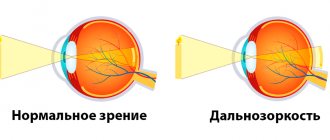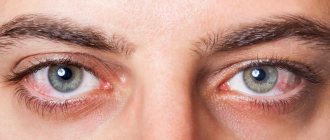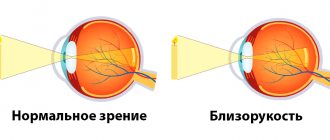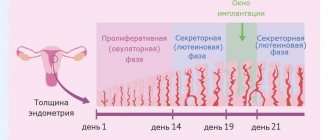The term “urticaria” covers a heterogeneous group of diseases and conditions, united by similar symptoms and one primary skin element - a blister.
In 40% of cases, urticaria is accompanied by the development of angioedema - swelling of the deep layers of the dermis, subcutaneous tissue and submucosal layer, with virtually no involvement of the superficial layers of the skin. Some patients may develop isolated angioedema without urticaria.
Epidemiology
Some types of urticaria affect 15–25% of the population, with acute urticaria (lasting less than 6 weeks) accounting for more than 60% of all cases. In 30% of cases, urticaria becomes chronic and recurrent. Acute urticaria develops more often in children and adolescents, chronic urticaria in adults, more often in women 20–40 years old. In 20–35% of patients with chronic urticaria, symptoms persist for the next ten years. In 30–50% of cases, chronic urticaria is caused by some kind of autoimmune disease.
In most cases, the cause of chronic recurrent urticaria in adults remains unknown.
Classification, types of urticaria and pathogenesis
A wheal is a local swelling of the dermis, usually characterized by itching, limited swelling of the skin, and hyperemia.
The blister completely resolves within a relatively short time. In addition to dividing urticaria into acute and chronic, there is a division into types depending on the factors that provoke exacerbation. Different forms of urticaria can occur simultaneously in the same patient. In addition, a number of conditions have been described that were once classified as urticaria, but are not such, or contain urticaria/angioedema as one of the symptoms of the clinical picture:
- Urticaria pigmentosa (mastocytosis) is a disease caused by the accumulation and proliferation of mast cells in tissues.
- Polymorphic skin rashes, including urticarial ones, are characteristic.
- Urticarial vasculitis - vasculitis with skin rashes - nodules and blisters, angioedema. After resolution of the elements, hyperpigmentation may be observed.
- Nonhistaminergic angioedema, such as hereditary angioedema, often associated with defects in the complement or kinin system.
- Exercise-induced anaphylaxis/urticaria.
- Cryopyrin-associated periodic syndrome (in the clinic there is an urticarial rash, fever, arthralgia or arthritis, increased fatigue and headaches. Includes familial cold autoinflammatory syndrome (Muckle-Wells syndrome (with the development of sensorineural hearing loss and renal amyloidosis) and infantile multisystem inflammatory disease .
- Schnitzler syndrome is a chronic urticaria with monoclonal IgM gammopathy.
- Gleich syndrome is episodic angioedema with eosinophilia.
- Wells syndrome is a granulomatous dermatitis with eosinophilia.
The key point in the pathogenesis of urticaria is the release of mast cell mediators (histamine, serotonin, chemotactic factors, arachidonic acid metabolites) and the development of their effects: vasodilation, increased permeability of the vascular wall with the appearance of edema and hyperemia; smooth muscle spasm; phenomena of itching and burning.
How is allergic urticaria treated?
First of all, when allergic urticaria develops, the effect of the allergen should be eliminated. In case of contact allergies, remove the irritating substance from the surface of the skin; in case of an insect bite, remove the sting, stop eating or taking medication, take enterosorbent (activated carbon, Enterosgel), and, if possible, rinse the stomach.
Before seeking medical help, you can take an antihistamine and use an ointment that does not contain hormones. There is no need to try to treat yourself; further prescriptions should be made by a doctor, since uncontrolled use of hormonal and other potent drugs can lead to negative consequences.
Medical care consists of a more precise selection of allergy medications that have minimal side effects, the prescription (in severe cases, with chronic urticaria) of systemic corticosteroids, and in some cases, immunosuppressants. Source: Modern principles of treatment of acute and chronic urticaria. Skorokhodkina O.V., Klyucharova A.R. Practical medicine No. 7, 2012. p. 45-49.
Emergency care for a patient with allergic urticaria is required when Quincke's edema develops. If it occurs, you should immediately call an ambulance. In order to alleviate the patient’s condition before the ambulance arrives, you need to calm him down, provide an influx of fresh air, and unfasten clothing that is restricting breathing. To relieve swelling, doctors provide the necessary assistance on site, including adrenaline injections and tracheal intubation, then the patient is taken to the hospital, where further treatment is carried out.
Clinic: course and symptoms of urticaria
Usually, the development of urticaria begins with itching, followed by the appearance of characteristic rashes - blisters, clearly limited, rising above the surface of the skin, of various shapes and sizes, sometimes confluent, with a color ranging from pale pink to intense hyperemia (sometimes with clearing in the center). The lifetime of the rash is from 30 minutes to 1–2 days, the resolution is complete. In most cases, the rashes come and go - they can last for several hours in one place and then disappear and reappear in another. When urticaria occurs in a chronic form, rashes often occur in the evening, which should be taken into account when planning a visit to the doctor. The general condition, as a rule, does not suffer, but prolonged itching certainly reduces the quality of life.
Angioedema is characterized by diffuse swelling of loose subcutaneous connective tissue in the area of the dorsal surface of the hands and feet, eyelids, lips, genitals, and mucous membranes; asymmetrical swelling and slight itching (usually a burning sensation or pain, bloating), the superficial skin may appear unchanged. Swelling of the neck, pharynx and larynx can lead to breathing problems and dysphagia; swelling of the intestinal wall - cause vomiting, diarrhea, abdominal pain. Resolution of the elements takes longer - up to 72 hours.
In the case of allergic urticaria associated with a reaction to physical factors, there is usually an association between the exposure and the appearance of the rash. The localization and type of elements will have their own characteristics.
So, with cold urticaria, a rash appears in those places that have been in contact with cold objects or cold air. Urticaria remain relatively short-lived and disappear when warmed.
With dermographic urticaria, the elements often look like linear blisters along the course of scratching. Rashes with aquagenic urticaria occur after contact with water of any temperature and look like small urticaria against the background of erythematous spots. Fortunately, this is a rare form of the disease.
Complications of urticaria
It is important to know what hives look like and to be able to provide first aid correctly.
This will help prevent the development of severe complications that can lead to death. Often urticaria is accompanied by Quincke's edema, which is also called angioedema. Its development in the larynx area is especially dangerous, as it can compress the trachea and impair breathing.
Another serious complication is anaphylactic shock. This is a life-threatening immediate allergic reaction that occurs when the human body is hypersensitive to a particular allergen. Usually develops upon repeated contact with the allergen and requires immediate medical attention.
Anamnesis
Given the ephemeral nature of urticaria rashes, it is extremely important to properly collect anamnesis. The doctor must understand whether it is urticaria, what provokes it and what mechanisms support it. Therefore, you should pay attention to the following points:
- description of the elements and associated sensations (itching, burning, pain);
- life expectancy of elements and the presence of secondary changes - hyperpigmentation, erosions, crusts, etc.;
- the cyclicity of the appearance of elements, the duration and frequency of the disease. For women, it is worth paying attention to the connection with the phases of the menstrual cycle;
- triggers, including medications, food intake, insect bites/stings, as well as physical factors and stress;
- previous therapy and its effectiveness;
- presence of allergic diseases in personal and family history;
- the presence of concomitant somatic pathology, including those associated with chronic urticaria, infectious diseases, autoimmune diseases, non-infectious chronic inflammatory diseases, especially involving the gastrointestinal tract, paraneoplasia;
- professional activity/hobby.
Causes of the disease
Allergic urticaria is one of the types of general pathology: urticaria (urticaria), which, in addition to the allergic mechanism, may have another pathogenesis. The causes of the development of urticaria are divided into exogenous (the influence of external factors) and endogenous (internal).
Exogenous:
- food products – nuts, eggs, fish and seafood, citrus fruits;
- medicines – antibiotics, drugs based on acetylsalicylic acid, non-steroidal anti-inflammatory drugs;
- transfusion of blood and its components;
- chemical – household chemicals, cosmetics;
- physical – cold, high temperature, sun, water;
- insect bites.
Endogenous:
- stress;
- general internal diseases;
- viral infections;
- helminthic infestations.
Often the cause of the development of pathology remains unknown. 90% of cases of the chronic form are of unclear origin.
The causes of allergic urticaria are most often a reaction to food, medications, or an immune response to the effects of toxins released during internal diseases.
Inspection
If a patient comes to an appointment with a rash, then it is necessary to understand how similar what he sees is to a urticarial rash. The presence of elements other than a blister, as well as atypical secondary elements - crusting, erosion, persistent hyperpigmentation - casts doubt on the diagnosis.
Also, during the examination, you should pay attention to the signs of atopic diseases and other somatic pathologies. If you suspect a connection between physical factors and the development of urticaria, provocative tests are informative. The doctor can apply streak stimulation with a spatula, apply heated or cooled objects, apply vibration sources, irradiate with light of different wavelengths, offer physical exercises and hang weights from the patient’s limbs, followed by assessment of the skin.
Laboratory and instrumental diagnosis of urticaria
In addition to general clinical studies, tests should be performed to look for concomitant somatic pathology. Often, patients in this category have diseases of the gastrointestinal tract and hepatobiliary system of infectious and non-infectious origin, autoimmune diseases, including autoimmune thyroiditis, which is widespread today. At the same time, examination results often lie within the reference values, and it is difficult to associate the appearance of urticaria with any concomitant pathology.
Differential diagnosis is carried out with a number of diseases, such as urticarial vasculitis, Dühring's dermatitis herpetiformis, erythema multiforme exudative, contact urticaria, as well as blood-sucking insect bites.
Traditional therapy
How to treat hives? The first step is to eliminate the causes and triggers of the disease if possible. Refusal of medications that provoke rashes, an attempt to avoid the influence of provoking physical factors, as well as adherence to a hypoallergenic diet can reduce the frequency of relapses of the disease, but all this has rather low effectiveness without drug therapy.
An important task is the rehabilitation of foci of chronic infection and correction of concomitant somatic pathology. Sometimes these measures are enough to prevent relapses.
The main drugs for urticaria, with which drug therapy begins, are, of course, H1-histamine receptor blockers. According to the recommendations of the World Allergy Organization, therapy should begin with second-generation antihistamines.
If symptoms persist for 2 weeks, then it is permissible to increase the dose to four times and continue taking it for up to 4 weeks. A sedating H1 blocker may be prescribed at night. If ineffective, it is recommended to change the drug or add antileukotriene drugs. During exacerbations, a short course of systemic glucocorticosteroids (3–7 days) is acceptable.
If manifestations of urticaria/angioedema persist, the issue of switching to 2nd line drugs must be resolved - glucocorticosteroids, immunosuppressants (cyclosporine), monoclonal antibody drugs (omalizumab). In the treatment of urticaria pigmentosa, as well as urticaria caused by physical factors, the stabilizer ketotifen is used mast cell membranes.
Angioedema (with the exception of hereditary forms associated with defects in the complement system or kinin system) is treated according to the same principles. In case of life-threatening conditions associated with the risk of asphyxia (swelling of the larynx, tongue), emergency treatment with the administration of adrenaline is required; emergency intubation or tracheostomy may also be necessary.
New trends
The effectiveness of treating urticaria with alternative groups of drugs is currently being studied. Among them: antidepressants, androgens, slow calcium channel blockers (nifedipine), M-anticholinergic blockers, sulfasalazine, methotrexate, colchicine.
The use of plasmapheresis and phototherapy in patients with solar urticaria is actively discussed. Separately, it is worth dwelling on the issue of the use of biological agents. The idea of binding and inactivating molecules involved in immune responses has always seemed extremely attractive in the search for a cure for hives. The appearance in practice of monoclonal antibodies (MAbs), which make it possible to solve this problem with high specificity and selectivity for target molecules, gave rise to a number of biomedical studies that studied the possibility of using MAbs for the treatment of immune-mediated diseases, including allergological diseases.
Currently, mAbs against immunoglobulin E, the drug omalizumab, are registered in Russia. The drug binds to IgE, blocks its interaction with receptors on mast cells, which prevents their subsequent degranulation; there is also a decrease in the number of IgE receptors on the surface of basophils. Omalizumab, originally used to treat severe atopic asthma, later showed its effectiveness in the treatment of chronic urticaria. However, scientists do not rest on this and continue to search for new biological agents to treat different types of urticaria.
Forecast
Often, an episode of acute urticaria may be the only one in a patient's life. If the patient is less fortunate and the allergy becomes chronic, then spontaneous remission can be expected in 50% of cases.
Potentially life-threatening are laryngeal edema with urticaria and the acute form of the disease with anaphylactic reactions. For patients with cold urticaria, swimming in cold water can be fatal due to asphyxia or systemic reactions with a drop in blood pressure.
Diagnostic procedures for urticaria
Diagnosis of acute urticaria is usually quite simple. An examination and questioning of the patient about his medical history is sufficient. Finding out the reason is not so easy, and for this purpose additional research is carried out:
1. Laboratory tests:
- general blood and urine analysis;
- blood biochemistry (liver tests - ALT, AST, bilirubin, rheumatic tests, blood glucose);
- stool examination (coprogram);
- bacterial cultures from the nasal and pharyngeal mucosa.
2. Instrumental research:
- chest x-ray;
- Ultrasound of the abdominal organs;
- endoscopic examinations of the upper and lower gastrointestinal tract (gastroscopy, colonoscopy).
3. Allergy tests:
- intradermal tests with allergens;
- cold and heat tests;
- physical stress tests, line drawing, tourniquet application.
4. Immunological methods.
5. Consultations of related specialists:
- gastroenterologist;
- endocrinologist;
- rheumatologist;
- gynecologist and others as necessary.
First of all, it is important for a specialist to establish what nature the urticaria is – allergic or non-allergic. In the allergic form, one can clearly trace the connection between the symptoms and the introduction of the allergen. It is confirmed by skin, allergy and immunological tests.









